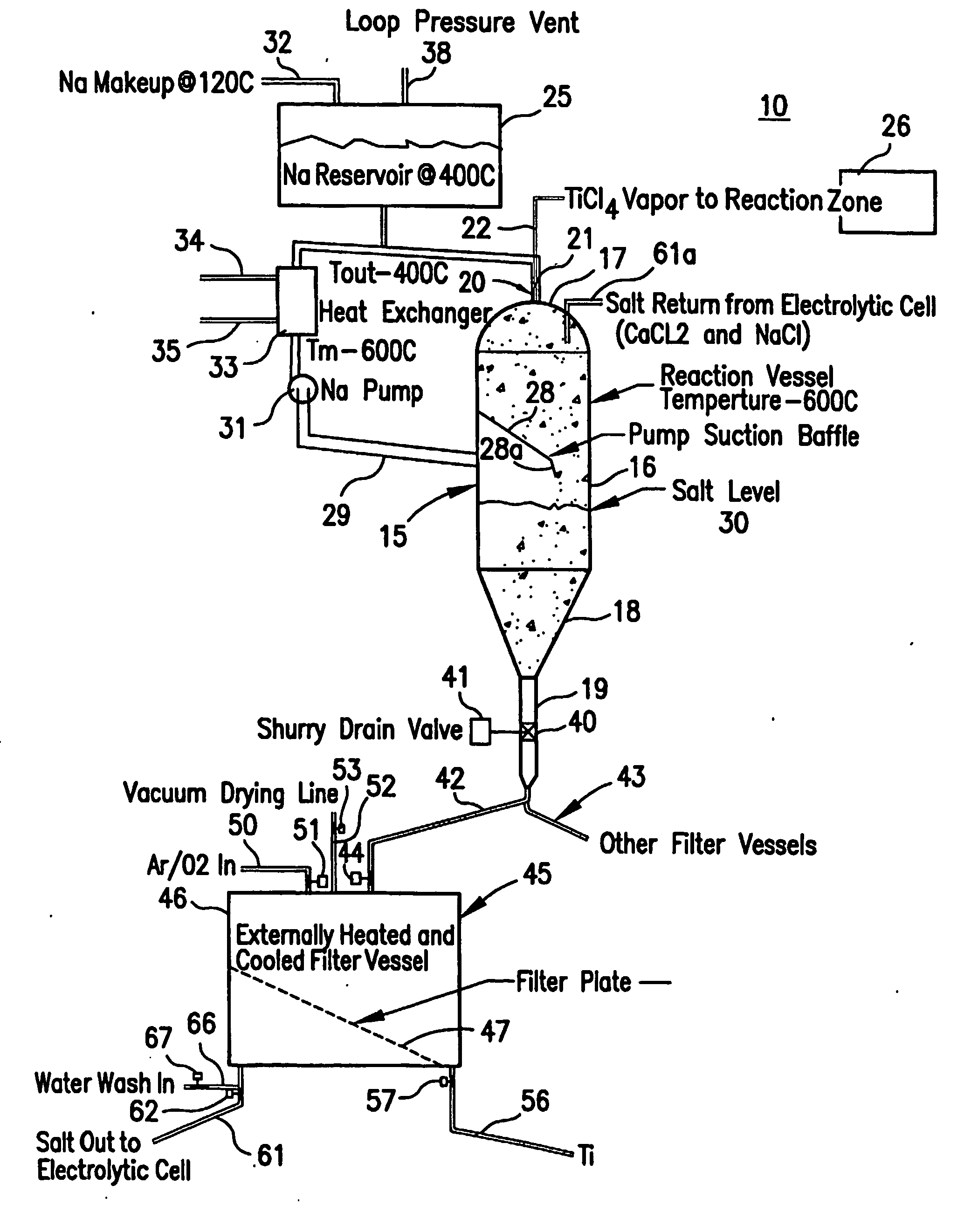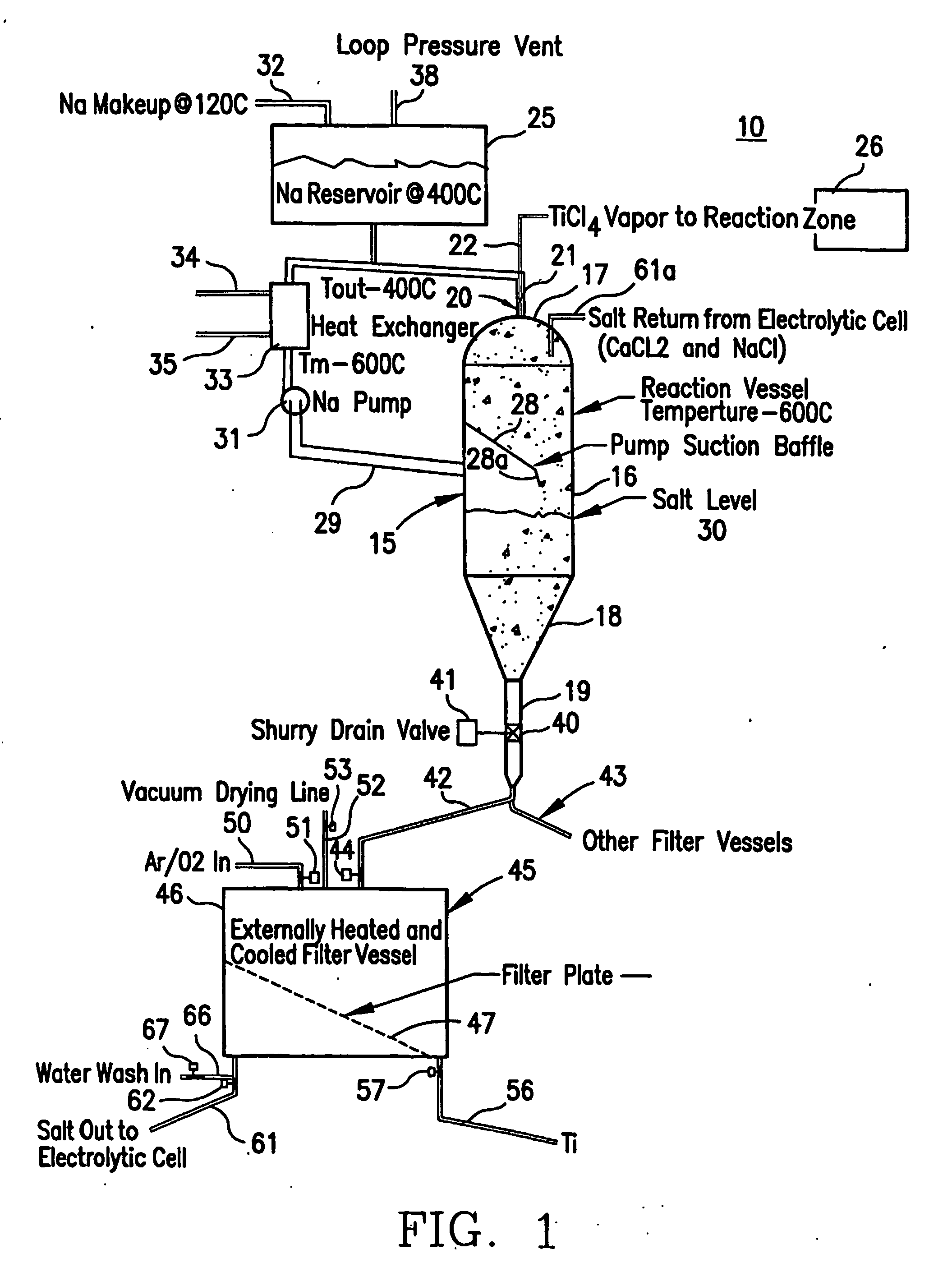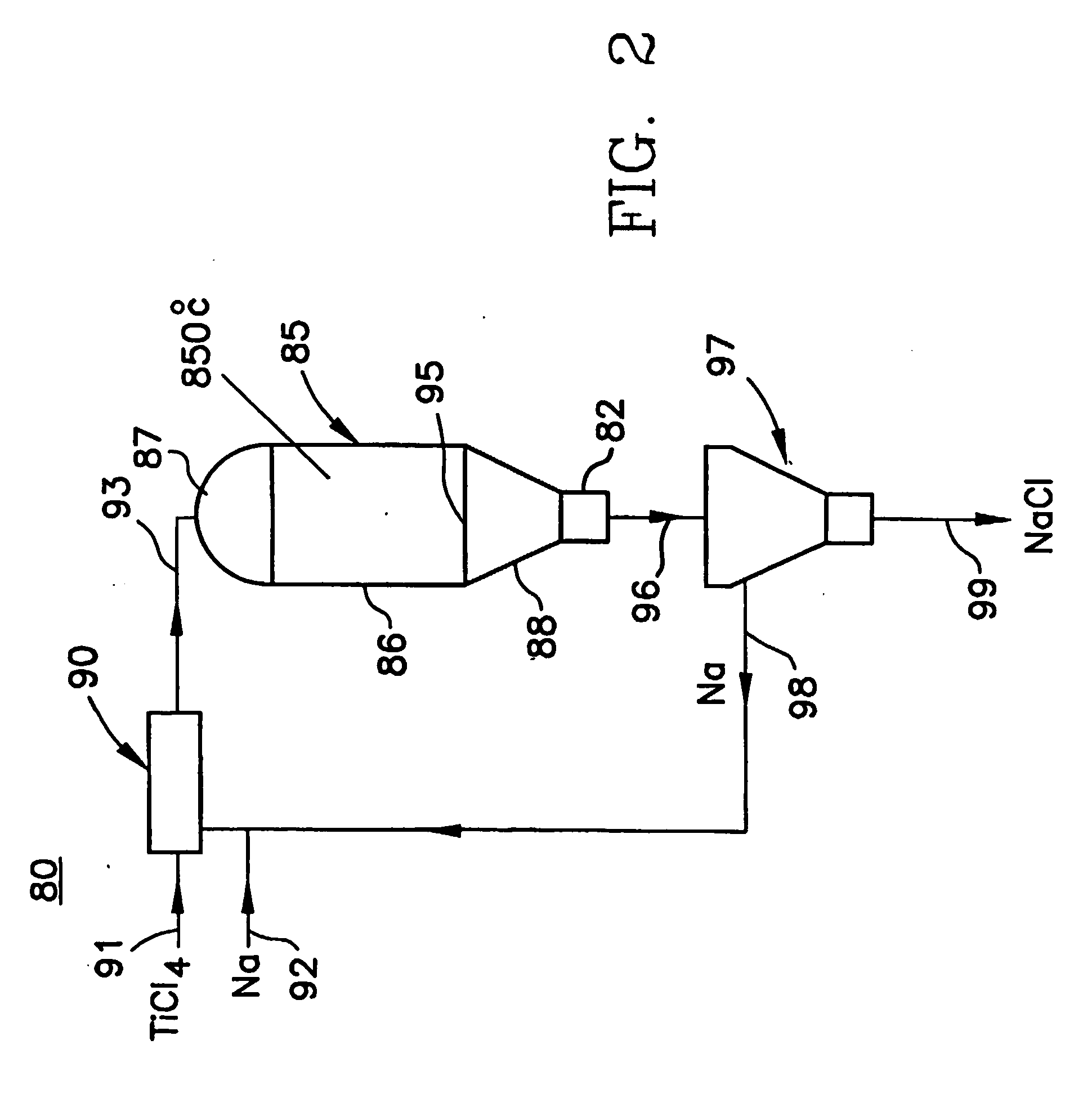Process for separating ti from a ti slurry
- Summary
- Abstract
- Description
- Claims
- Application Information
AI Technical Summary
Benefits of technology
Problems solved by technology
Method used
Image
Examples
Embodiment Construction
[0014] Referring now to the drawings and more particularly to FIG. 1, there is shown a separation system 10 in which a vessel 15 has a generally cylindrical portion 16 with a dome shaped top 17 and a frustoconical shaped bottom 18 and exit pipe 19 extending from the bottom of the vessel 15. A reactor 20 of the type disclosed in the above-referenced patents has a outer liquid metal or sodium tube 21 and an inner halide vapor or titanium tetrachloride tube 22. A liquid metal or sodium supply tank 25 feeds sodium to the sodium or other liquid metal to the reactor 20 and a halide boiler 26 feeds the appropriate halide vapor to the reactor 20, all as previously described.
[0015] Internally of the vessel 15 is a downwardly sloping baffle 28 having a distal end 28a extending at a more acute angle and generally opposite to a sodium or liquid metal outlet 29. The liquid metal outlet 29 is in fluid communication with a metal or sodium pump 31 which leads to a heat exchanger 33 having a fluid ...
PUM
| Property | Measurement | Unit |
|---|---|---|
| Temperature | aaaaa | aaaaa |
| Temperature | aaaaa | aaaaa |
| Fraction | aaaaa | aaaaa |
Abstract
Description
Claims
Application Information
 Login to View More
Login to View More - R&D
- Intellectual Property
- Life Sciences
- Materials
- Tech Scout
- Unparalleled Data Quality
- Higher Quality Content
- 60% Fewer Hallucinations
Browse by: Latest US Patents, China's latest patents, Technical Efficacy Thesaurus, Application Domain, Technology Topic, Popular Technical Reports.
© 2025 PatSnap. All rights reserved.Legal|Privacy policy|Modern Slavery Act Transparency Statement|Sitemap|About US| Contact US: help@patsnap.com



